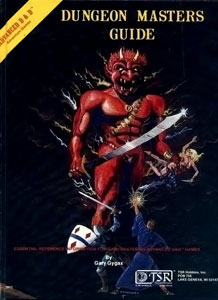
The Dungeon Master's Guide is a book of rules for the fantasy role-playing game Dungeons & Dragons. The Dungeon Master's Guide contains rules concerning the arbitration and administration of a game, and is intended for use by the game's Dungeon Master.

City State of the Invincible Overlord is a fantasy role-playing game supplement originally published by Judges Guild in 1976. It was the first published fantasy role-playing game city setting, designed for use with Dungeons & Dragons (D&D), and officially approved for use with D&D from 1976 through 1983. It was later republished under license by Necromancer Games.

Night's Dark Terror is an adventure module for the Dungeons & Dragons (D&D) fantasy role-playing game written by British game designers Jim Bambra, Graeme Morris, and Phil Gallagher. It was designed specifically for campaigns transitioning from the D&D Basic Set to the D&D Expert Set. The player characters (PCs) journey from a farmstead into uncharted wilderness, where they encounter new hazards and contend with a secret society. The adventure received a positive review from White Dwarf magazine.

Powers & Perils (P&P) is a role-playing game written by Richard Snider and published by Avalon Hill in 1983 as a boxed set.

The Dungeons & Dragons Basic Set is a set of rulebooks for the Dungeons & Dragons (D&D) fantasy role-playing game. First published in 1977, it saw a handful of revisions and reprintings. The first edition was written by J. Eric Holmes based on Gary Gygax and Dave Arneson's original work. Later editions were edited by Tom Moldvay, Frank Mentzer, Troy Denning, and Doug Stewart.

Dark Tower is an adventure module published by Judges Guild in 1980 for the Advanced Dungeons & Dragons fantasy role-playing game.

A gamemaster's screen, also called a GM's screen, is a gaming accessory, usually made out of either cardboard or card stock, and is used by the gamemaster to hide all the relevant data related to a tabletop role-playing game session from the players in order to not spoil the plot of the story. It also hides any dice rolls made by the gamemaster that players should not see. In addition, screens often have essential tables and information printed on the inside for the gamemaster to easily reference during play.
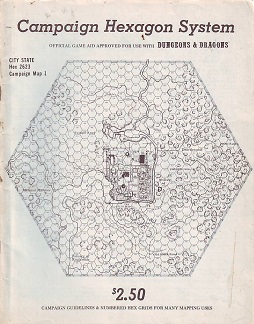
Campaign Hexagon System is a book guide published by Judges Guild in 1977 for the Dungeons & Dragons game.

Dungeon Floor Plans is a supplement for fantasy role-playing games published by Games Workshop in 1978.
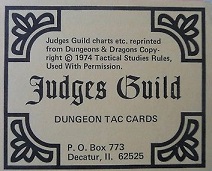
Dungeon Tac Cards is a supplement for fantasy role-playing games published by Judges Guild in 1976.
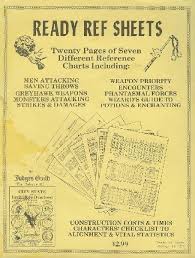
Ready Ref Sheets is a supplement for fantasy role-playing games published by Judges Guild in 1977.

Traveller Referee Screen is a 1979 role-playing game supplement for Traveller published by Judges Guild.

Tegel Manor is a 1977 fantasy role-playing game adventure published by Judges Guild.
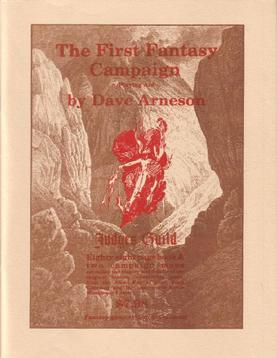
The First Fantasy Campaign is a supplement for fantasy role-playing games written by Dave Arneson and published by Judges Guild in 1977.
The Endless Dungeon is a supplement for fantasy role-playing games published by Wee Warriors in 1977.

Dungeon Planner Set 1: Caverns of the Dead is an adventure published by Games Workshop in 1984 for use with fantasy role-playing games.

The Halls of the Dwarven Kings is an adventure published by Integrated Games in 1984 for any role-playing game system.

The Lost Shrine of Kasar-Khan is an adventure published by Integrated Games in 1985 for fantasy role-playing games.
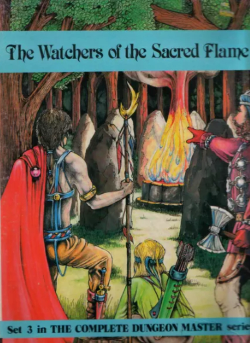
The Watchers of the Sacred Flame is an adventure published by Integrated Games in 1986 for any role-playing game system.

The Feathered Priests is an adventure published by Integrated Games in 1986 for any role-playing game system.


















